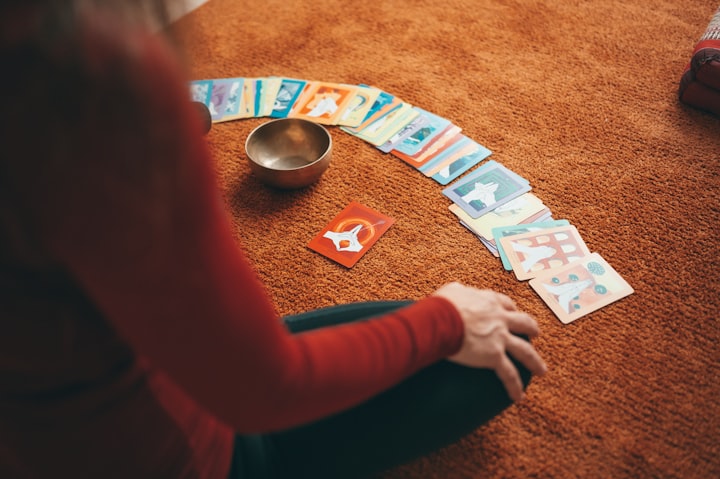What is the spiritual meaning of namaste
Spiritual Meaning of Namaste Explained

Have you ever experienced a moment of profound connection with another person, where time seems to stand still and you feel a deep sense of peace?
I had such a moment during my yoga class, when our instructor asked us to say "Namaste" to each other at the end of the practice.
As I looked into the eyes of the person across from me and said those simple yet powerful words, something shifted within me.
Namaste is more than just a greeting; it is a spiritual practice that bridges the gap between individuals and connects us at the soul level.
It acknowledges the divinity within each of us and honors the sacredness of our shared existence.
The spiritual meaning of namaste is profound, and it has the potential to transform our relationships, both with ourselves and with others.
In this article, we will explore the spiritual significance of namaste, its historical origins, and its role in yoga and mindfulness practices.
We will delve into the deeper meaning behind the namaste greeting and how it can cultivate compassion, empathy, and a sense of interconnectedness.
By the end of this journey, you will have a deeper understanding of namaste and how it can enhance your spiritual journey.
Key Takeaways:
Namaste is a spiritual practice that connects individuals at the soul level.
It acknowledges the divinity within each of us and honors our shared existence.
Namaste has the potential to transform relationships and enhance our spiritual journey.
Throughout this article, we will explore the historical origins and deeper meaning of namaste.
We will also discuss namaste's role in yoga and mindfulness practices.
Introduction to Namaste

In this section, I will provide an introduction to the concept of namaste. Namaste is a traditional Indian greeting that is used as a respectful salutation or farewell.
It is often accompanied by a slight bow and placing the palms together in front of the heart. The word "namaste" itself carries a deep meaning and is derived from Sanskrit, with "nama" meaning "bow" or "obeisance" and "te" meaning "you."
Namaste is essentially a way of acknowledging the divine spark within others and recognizing the interconnectedness of all beings. It is an expression of reverence and respect.
Historical Origins of the Namaste Greeting
In this section, we will explore the historical origins of the namaste greeting.
Namaste, rooted in ancient Indian culture, has been practiced for thousands of years.
This traditional greeting holds deep significance within Indian traditions and customs, particularly in Hinduism.
The practice of greeting others with namaste can be traced back to the Vedas, the oldest scriptures of Hinduism.
Namaste has evolved over time as a form of respect and recognition of the divine spark within each individual.
Its historical origins lie in the spiritual teachings of the Vedas, which exemplify the interconnectedness and oneness of all beings.
As we delve into the history of namaste, we gain a deeper understanding of its cultural and spiritual significance.
The origins of namaste provide insight into the values, beliefs, and practices of ancient Indian spirituality.
What is the spiritual meaning of namaste

In this section, we will unravel the spiritual meaning of namaste. Namaste is not just a superficial greeting; it carries a profound message about the nature of our existence.
It is rooted in the belief that there is a divine spark within each individual, and by recognizing this divinity in others, we establish a connection at a spiritual level.
The Divine Spark Within
The spiritual meaning of namaste lies in the recognition of the divine spark within ourselves and others.
It is an acknowledgment that we are all interconnected and that there is a higher essence within each of us.
By practicing namaste, we honor and respect the inherent divinity present in every person we encounter.
Symbolism of Bowing in Namaste
The act of bowing in namaste holds deep symbolism. It represents humility and the surrendering of the ego.
When we bow, we let go of our own self-importance and open ourselves to the wisdom and presence of others.
It is a symbol of unity, reminding us that we are all equal and interconnected.
Namaste as a Form of Respect
Namaste is a powerful expression of respect. By greeting others with namaste, we honor their inherent worth and dignity.
It is a way of acknowledging the divine presence within them and showing reverence for their unique journey.
Namaste is a practice that fosters love, compassion, and understanding in our interactions with others.
Namaste in Yoga and Mindfulness Practices

Incorporating namaste into yoga and mindfulness practices enhances the spiritual experience and deepens the connection with oneself and others.
The practice of namaste aligns perfectly with the fundamental principles of yoga philosophy and plays a significant role in mindful meditation.
Connection to Yoga Philosophy
Namaste is rooted in the philosophy of yoga, which emphasizes unity and the realization of our true nature.
By bringing the hands together in namaste, we unite the left and right sides of our body, symbolizing the integration of mind, body, and spirit.
This gesture represents the union of individual consciousness (self) with universal consciousness (Divine) and acknowledges the sacredness of all existence.
It serves as a reminder to honor and respect the divine spark within each individual, fostering a sense of interconnectedness and oneness.
Namaste's Role in Mindful Meditation
During mindful meditation, namaste serves as a focal point and gateway to the present moment.
By bringing our hands to our heart center and bowing our heads, we cultivate a sense of humility and surrender, quieting the ego's incessant chatter.
The practice of namaste helps us let go of distractions, allowing us to dive deep into the present moment and connect with our inner selves.
It brings us into a state of mindfulness, where we can observe our thoughts, sensations, and emotions without judgment, cultivating greater self-awareness and inner peace.
Through the integration of namaste into yoga and mindfulness practices, we deepen our connection to ourselves, others, and the divine.
It is a gentle reminder to approach our practice with reverence, creating a sacred space within ourselves and honoring the wisdom and unity that yoga philosophy and mindful meditation offer.
The Spiritual Significance of Indian Greeting Namaste

In this section, we will explore the spiritual significance of the Indian greeting namaste.
Namaste is deeply rooted in the spiritual traditions of India and carries profound symbolism.
It represents the interconnectedness of all beings, the recognition of the divine within others, and the cultivation of compassion and humility.
The spiritual meaning of namaste goes beyond a simple greeting. It is an acknowledgment of the divinity that resides within each individual.
By saying namaste, we honor the inherent sacredness in others and recognize their inner light.
The act of bowing and placing the palms together in front of the heart is symbolic of surrendering the ego and embracing humility.
Namaste reminds us to let go of our individual identities and connect with the universal consciousness that binds us all.
By understanding the spiritual significance of namaste, we can deepen our appreciation for this powerful greeting.
It inspires us to approach others with love, kindness, and respect, fostering harmony and unity in our relationships and interactions.
Namaste Beyond the Physical Gesture

In this section, we will explore the deeper meaning behind namaste beyond its physical gesture.
While the act of bowing and placing the palms together is significant, there is an unseen bond that namaste creates.
Interpreting the Spiritual Gesture
To truly understand the spiritual meaning of namaste, we must look beyond the physical action. Namaste is a profound gesture that goes beyond a mere greeting.
It is an expression of recognizing the divine essence within oneself and others.
When we bring our hands together, we unite the physical and spiritual aspects of our being. This gesture is a symbol of humility, respect, and unity.
The Unseen Bond Namaste Creates
At its core, namaste creates an unseen bond between individuals. When we acknowledge the divinity within others, we establish a connection that transcends superficial differences.
Namaste reminds us that we are all interconnected and part of the same universal energy. It fosters empathy, compassion, and a sense of shared humanity.
Through namaste, we acknowledge the spiritual nature of every being we encounter.
It is a powerful tool for building deeper connections, fostering understanding, and promoting harmony in our relationships.
The unseen bond created through namaste is a reminder of our inherent interconnectedness and the oneness that exists within us all.
Global Acceptance and the Spread of Namaste Spirituality

In recent years, namaste has gained widespread recognition and acceptance as a spiritual practice, transcending cultural boundaries.
This ancient Indian greeting has found its way into various cultures and spiritual traditions around the world, adapting to different contexts while preserving its core meaning.
The universality of namaste's wisdom lies in its ability to resonate with people from diverse backgrounds.
It speaks to our shared humanity and the universal desire for connection and understanding.
Regardless of one's religious or cultural background, namaste provides a common ground for embracing the spiritual essence within ourselves and others.
As the practice of namaste has spread globally, it has found a place in a variety of contexts.
Whether it is in the yoga studio, meditation retreats, or interfaith gatherings, namaste serves as a powerful reminder of our interconnectedness and our inherent spiritual nature.
Through the practice of namaste, individuals are able to recognize the divinity within themselves and extend that recognition to others.
It fosters a sense of unity, respect, and reverence for all beings, creating a ripple effect of compassion and love.
The global acceptance of namaste is a testament to its deep spiritual significance and its ability to transcend cultural and religious boundaries.
It reminds us that, at the core of our being, we are all interconnected and part of a greater whole.
Namaste's Representation in Religious Contexts

In this section, I will explore the representation of namaste in religious contexts.
Namaste holds a special place in Hinduism, where it is deeply intertwined with spiritual and ritual practices.
It is used in various religious ceremonies and rituals, as well as in daily life, to greet and show respect to others.
Namaste is more than just a customary greeting; it is a profound acknowledgment of the divinity within each individual.
Namaste in Hinduism
In Hinduism, namaste is considered a sacred gesture that reflects the belief in the divine presence within every living being.
When Hindus perform namaste, they recognize the inherent divinity in others and pay homage to the divine within themselves.
It is a way of showing reverence, humility, and unity with the entire creation.
Namaste is commonly used during Hindu religious ceremonies, prayers, and auspicious occasions as a sign of respect and devotion.
Commonalities with Other Religious Gestures
While namaste is deeply rooted in Hinduism, there are striking similarities between namaste and similar gestures in other religious traditions.
Many cultures around the world have their own versions of respectful greetings and gestures that signify recognition of the divine presence in others.
These gestures often involve joining palms, bowing, or touching the heart. Examples include the Anjali Mudra in Buddhism, the Adab gesture in Islam, and the Gassho gesture in Japanese Buddhism.
These similar gestures highlight the universal themes of reverence, respect, and interconnectedness that are present in various faiths and traditions.
Namaste in Hinduism Commonalities with Other Religious Gestures
- Sacred gesture
- Reflection of divine presence within every being
- Commonly used in Hindu religious ceremonies and prayers - Striking similarities with respectful gestures in other religious traditions
- Signify recognition of the divine presence in others
- Manifestation of reverence, respect, and interconnectedness
By exploring namaste's representation in religious contexts, we can gain a deeper understanding of its universal significance across different faiths and traditions.
Namaste serves as a powerful reminder of the inherent divinity within all beings and the importance of recognizing and honoring the sacredness in every individual.
Deep Spiritual Significance of Namaste
In this section, we will delve deeper into the spiritual significance of namaste.
Namaste is more than just a simple greeting; it carries a profound meaning rooted in the understanding of the self and the concept of Atman.
Atman represents the true self or soul, which exists beyond the physical realm.
Exploring the Concept of Atman
The concept of Atman is central to Indian philosophy and spirituality. It refers to the eternal, unchanging essence of an individual that transcends the body, mind, and ego.
Atman is believed to be the divine spark within each living being, representing the interconnectedness of all existence.
By practicing namaste, we recognize and honor the Atman within ourselves and others.
It is a way of acknowledging the divine essence that unites us all, regardless of our external differences.
In doing so, we cultivate a deep sense of respect, compassion, and unity.
Namaste as a Recognition of Oneness
Namaste serves as a powerful reminder of the inherent oneness of all beings.
When we bow our heads and bring our hands together in a namaste gesture, we symbolize the merging of our individual selves with the universal consciousness.
It signifies that we are not separate but interconnected and interdependent.
This recognition of oneness goes beyond superficial differences such as nationality, race, or religion.
It embraces the idea that we are all part of a larger whole, and our actions and intentions affect the collective consciousness.
By practicing namaste, we strive to promote harmony, love, and understanding in our relationships and interactions.
Namaste, with its deep spiritual significance, invites us to go beyond the surface-level interactions and truly connect with the essence of another being.
It encourages us to see the divine in others and treat them with reverence and respect.
As we explore the concept of Atman and understand namaste as a recognition of oneness, we open ourselves to a deeper level of consciousness and compassion.
Through the practice of namaste, we can foster unity, harmony, and a profound sense of interconnectedness in our lives.
How to Properly Practice the Namaste Greeting
In this section, I will provide guidelines on how to properly practice the namaste greeting.
Namaste is not just a simple gesture; it is a meaningful expression of respect and reverence.
To ensure that your namaste greeting is sincere and authentic, it is essential to prepare your intentions beforehand.
Preparing Your Intentions
Before engaging in the namaste greeting, take a moment to reflect on your intentions.
Namaste is a way of acknowledging the divine spark within others and fostering a connection at a spiritual level.
To practice namaste with genuine intent, consider the following:
Be present: Clear your mind of distractions and fully be in the moment. This will allow you to give your undivided attention to the person you are greeting.
Cultivate compassion: Approach the namaste greeting with a genuine sense of empathy and care for the other person. Recognize their humanity and honor their unique journey.
Show respect: Namaste is a gesture of respect. When practicing it, hold a deep sense of reverence for the person you are greeting, acknowledging their inherent worth and dignity.
The Etiquette of Using Namaste in Different Cultures
While namaste is widely recognized and appreciated, it is important to be mindful of cultural variations and respectful of local customs. Here are some guidelines on using namaste in different cultures:
Culture Etiquette
Indian The namaste greeting is deeply rooted in Indian culture. Ensure that your palms are pressed together firmly, fingers pointing upwards, and make a slight bow while saying "namaste."
Japanese In Japan, a similar greeting known as "gassho" is practiced. Place your hands together in front of your chest, fingers pointing upwards, and bow slightly while saying "namaste."
Thai In Thailand, a greeting called the "wai" is commonly used. Press your palms together in front of your chest, fingers pointing upwards, and bow your head slightly while saying "namaste."
Tibetan In Tibetan culture, the namaste greeting is often accompanied by the phrase "Tashi Delek." To greet someone, place your hands together at your heart level and bow slightly.
By understanding and respecting the cultural norms surrounding the use of namaste, you can ensure that this gesture is received and appreciated in the spirit it is intended.
Conclusion
In conclusion, the spiritual meaning of namaste extends far beyond a simple greeting.
It is a profound recognition of the divine spark within each individual, an invitation to connect with others on a deeper level.
When we say namaste, we embrace the essence of unity, respect, and the acknowledgement of our shared humanity.
Understanding the spiritual significance of namaste allows us to cultivate compassion, empathy, and a sense of interconnectedness in our interactions with others.
It is a powerful reminder that we are all connected by the same divine thread.
Whether we are practicing yoga, engaging in mindfulness, or simply encountering someone in our daily lives, namaste serves as a universal symbol of peace, love, and unity.
Over time, the practice of namaste has transcended cultural boundaries and become a global phenomenon.
It has been embraced by people from different backgrounds, cultures, and spiritual traditions.
This wide acceptance highlights the universal yearning for connection, understanding, and harmony.
As we continue our journey, let us carry the essence of namaste in our hearts, allowing it to guide our interactions and shape our relationships.
Through the spiritual meaning of namaste, we can foster a world filled with compassion, empathy, and love for one another.
FAQ
What is the spiritual meaning of namaste?
The spiritual meaning of namaste goes beyond a simple greeting. It represents the recognition of the divinity within each individual and the interconnectedness of all beings. By practicing namaste, we acknowledge the sacred essence within ourselves and others.
What is the significance of the namaste gesture?
The namaste gesture, which involves bowing and placing the palms together in front of the heart, symbolizes humility, respect, and the surrendering of the ego. It is a physical manifestation of our recognition of the divine within others and serves as a way to establish a spiritual connection.
How is namaste related to yoga and mindfulness practices?
Namaste has become synonymous with yoga and mindfulness practices as it represents the union of the mind, body, and spirit. It serves as a reminder to stay present, cultivate inner peace, and honor the divine within ourselves and others.
Can namaste be used in other religious traditions?
While namaste originated in Hinduism, it shares commonalities with similar gestures in other religious traditions. The act of bowing and recognizing the divine in others is a universal theme in many spiritual and religious practices.
How should I properly practice the namaste greeting?
To properly practice the namaste greeting, it is important to approach it with genuine respect and reverence. Prepare your intentions, acknowledging the divine within the other person, and bow slightly while placing your palms together in front of your heart. Be mindful of cultural norms and etiquette when using namaste in different contexts.
Are You Tired Of Constantly Battling Life's Challenges Without A Breakthrough?
Discover the secrets to overcoming obstacles and achieving the success you deserve. Unlock your path to a brighter, more fulfilling future now
About the Creator
Samson Williams
Hey there, I'm Samson Williams, and I'm all about helping folks like you tap into your full potential through the magic of astrology-based transformation. Ever since I can remember, I've been fascinated by the connections between






Comments
There are no comments for this story
Be the first to respond and start the conversation.